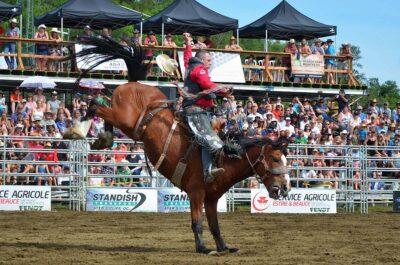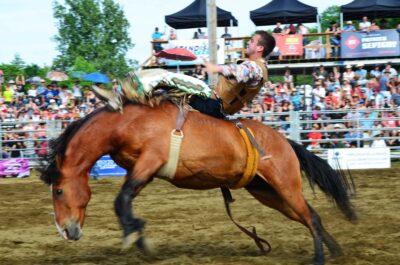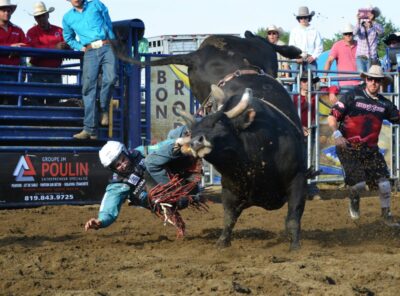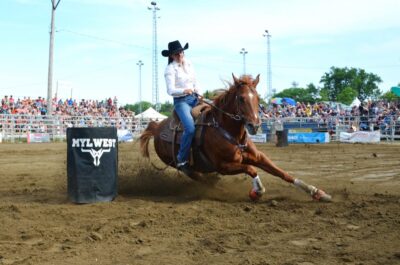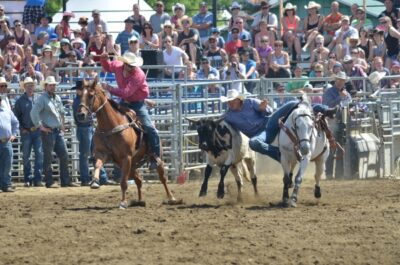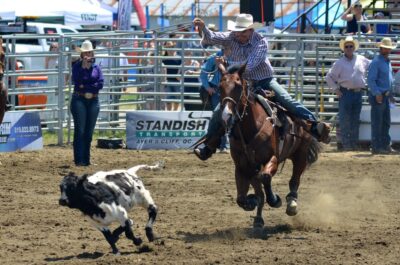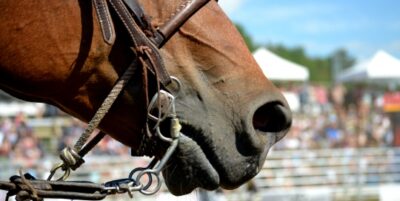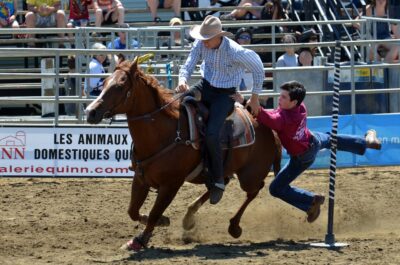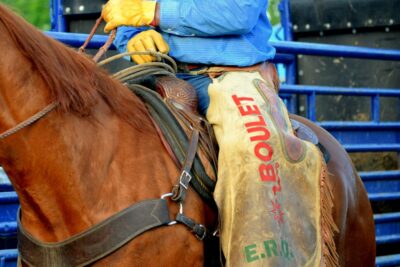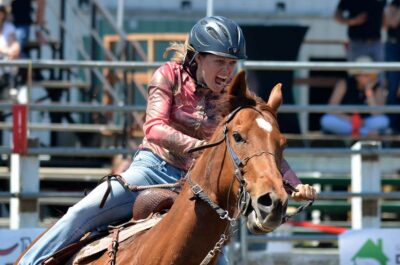“The term rodeo comes from the Spanish verb rodear “to circle” or the Latin verb rotare “to turn”. Today, rodeo, which is generally associated with the “western” lifestyle, attracts spectators from coast to coast. The first official Canadian rodeo, “The Last and Best Great West Frontier Days Celebration,” was held on September 2, 1912 in Calgary. Rodeo in North America has its origins in a variety of historical traditions and types of entertainment. In the 16th century, vaqueros, or Mexican cowboys, used the reata (rope), donned chaperajos (leggings) and, on their spirited mounts of North African origin, herded sturdy Spanish cattle.”
The rodeo?
What is A rodeo?
It is with the aim of entertaining themselves on the ranch that the cowboys invented these games that we now call rodeo. Indeed, rodeo events were used more to care for the cattle, to brand them or to sell them. Now, as an extreme sport, it refers to the show given by cowboys where they show different events: the riding of the wild horse with and without saddle, the riding of the bull, the terracing of the steer and the lassoing to name a few. To give you some background, the first Canadian rodeo was held in Raymond, Alberta in 1903. A little over 100 years later, this sport is in full bloom throughout Quebec.
Despite the many events that exist, riding wild animals with or without a saddle is definitely the most popular event at the rodeos we know today. Here are some important notions and basic rules that we advise you to pay attention to when watching the competitors who will be with us at the Ayers Cliff Rodeo.
First of all, it is important to mention that the pairing of the competitor and the animal is randomly selected only one hour before the beginning of the competition. When riding the bull or horse, the rider must mount the animal and hold onto a rope with his weaker hand for eight seconds without touching the animal with his other hand, which is used to keep his balance on the animal. Judges then assign a score to the animal and competitor team. A score out of 100 points is then assigned as follows:
- 50 points for the competitor, who is judged on agility, style, and ease of getting on the animal;
- 50 points for the animal, which is judged on strength, kicking and direction changes.
During our Rodeo in Ayer’s Cliff, we will have different disciplines presented.
Here is the description of the disciplines that await you:
